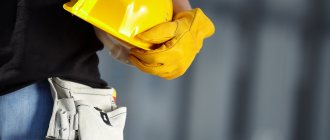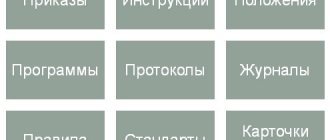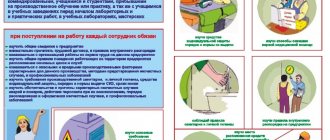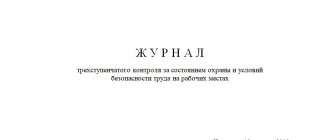home
›
Helpful information
› Standards for cleaning office premises
Special standards for cleaning office premises are developed in order to maintain a certain level of cleanliness in them. The main documents regulating these procedures are the following: GOST R 51870-2002 “Household services. Cleaning services for buildings and structures. General technical conditions”, SanPiN 42-128-4690-88 and standards approved by Decree of the USSR State Labor Committee of December 29, 1990 N 470. Their main provisions should be known to all managers who care about their employees and the quality of products. In order to comply with these standards, a full-time position of a premises cleaner may be provided or an agreement may be concluded with a specialized company to provide cleaning services.
Our services:
8
Construction workers, laborers, helpers Order
Cleaning of retail spaces Order
cleans office premises and offices in Moscow efficiently, quickly and in compliance with all established regulations.
Post navigation
The payroll number (Ch_sp) is determined by the formula:
Ch_sp = Ch_ya x K_n.
Calculation of the number of workers by profession:
According to the table 1, based on the number of places in the wardrobe (630), we determine the standard number of wardrobe attendants per shift (N_ya). For this building it is 2.02 people.
Number of wardrobe attendants:
Ch_sp = 2.02 x 1.1 = 2.22
workers engaged in the maintenance and repair of building engineering equipment
According to the table 2, based on the number of workers (536 people) and the total area of the building (2535 sq. m), we determine the standard number of workers per day (N_ya).
Search
Vacuum cleaners are used to clean carpets, walkways, soft sofas, armchairs and chairs.
Calculation of service standards
Service standards for office cleaners are developed differently depending on the purpose of the premises and their occupancy.
The standards are established on the basis of inter-industry time standards for cleaning office and cultural premises (M.: Research Institute of Labor, 1983), taking into account the list of works and the frequency of their implementation, which developed during the maintenance of most of the surveyed buildings and is given in Appendix 2. In the event that the frequency of cleaning work in the field is different, then the service standards are recalculated accordingly.
cleaning of apartments and offices
My works{"items":["09f5fe24-d8fa-11e8-8c97-12efbd0b6636","ed0da50f-7945-4b9c-8aa3-58b618079535","88538fb3-cd63-4bae-af08-f47ee09efed2","06f1f0ea-99 fa-4888 -ba58-50514f10a9a1"],"styles":{"galleryType":"Strips","groupSize":1,"showArrows":true,"cubeImages":true,"cubeType":"fit","cubeRatio": 1.3333333333333333,"isVertical":false,"collageAmount":0.8,"collageDensity":1,"groupTypes":"1","oneRow":true,"imageMargin":5,"galleryMargin":0,"floatingImages": 0,"chooseBestGroup":true,"smartCrop":false,"hasThumbnails":false,"enableScroll":true,"isGrid":false,"isSlider":true,"isColumns":false,"isSlideshow":false, "cropOnlyFill":true,"fixedColumns":0,"enableInfiniteScroll":1,"gotStyleParams":true,"selectedLayout":"4|bottom|undefined|fit|false|undefined|1″,"isRTL":false, "minItemSize":120,"fullscreen":true,"allowSocial":false,"allowDownload":true,"allowTitle":false,"allowDescription":false,"loveButton":true,"loveCounter":true,"videoLoop ":true,"videoSound":false,"videoSpeed":1,"videoPlay":"auto","gallerySliderImageRatio":1.3333333333333333,"galleryImageRatio":2,"numberOfImagesPerRow":3,"sharpParams":{"quality" :90,"usm":{"usm_a":0.13,"usm_r":6.1,"usm_t":0.14901960784313725},"allowUsm":true},"viewMode":"preview","galleryHorizontalAlign":"center", "galleryTextAlign":"center","galleryVerticalAlign":"center","itemClick":"expand","galleryThumbnailsAlignment":"bottom","thumbnailSpacings":5,"gridStyle":1,"titlePlacement":"SHOW_ON_HOVER ","hoveringBehaviour":"APPEARS","mobilePanorama":false,"isAutoSlideshow":false,"slideshowLoop":false,"playButtonForAutoSlideShow":false,"allowSlideshowCounter":false,"autoSlideshowInterval":4,"arrowsSize": 23,"slideshowInfoSize":200,"imageLoadingMode":"BLUR","scrollAnimation":"NO_EFFECT","overlayAnimation":"NO_EFFECT","imageHoverAnimation":"NO_EFFECT","expandAnimation":"NO_EFFECT","itemBorderWidth ":0,"itemBorderColor":{"themeName":"color_15","value":"rgba(0,0,0,1)"},"itemBorderRadius":0,"itemEnableShadow":false,"itemShadowOpacityAndColor" :{"themeName":"color_15","value":"rgba(0,0,0,0.2)"},"itemShadowBlur":20,"loadMoreAmount":"all","itemShadowDirection":135,"itemShadowSize ":10,"imageInfoType":"NO_BACKGROUND","textBoxBorderRadius":0,"textBoxBorderWidth":0,"textBoxBorderColor":{"themeName":"color_15","value":"rgba(0,0,0, 1)"},"titleDescriptionSpace":6,"textsVerticalPadding":0,"textsHorizontalPadding":0,"textBoxFillColor":{"themeName":"color_12","value":"rgba(191,191,191,1)"}, "textBoxHeight":0,"textImageSpace":10,"alwaysShowHover":false,"isStoreGallery":false,"previewHover":false,"calculateTextBoxHeightMode":"AUTOMATIC","galleryLayout":4,"thumbnailSize":120, "useCustomButton":false,"itemOpacity":{"themeName":"color_14","value":"rgba(64,64,64,0.6)"},"itemFont":{"style":{"bold" :false,"italic":false,"underline":false},"family":"oswald","preset":"Heading-M","editorKey":"font_5","size":50,"fontStyleParam ":true,"displayName":"Basic Heading","value":"font:normal normal normal 50px/1.34em oswald,sans-serif;"},"itemFontSlideshow":{"family":"avenir-lt- w01_85-heavy1475544″,"displayName":"Basic Heading","style":{"bold":false,"italic":false,"underline":false},"size":22,"preset":"Custom ","editorKey":"font_5″,"fontStyleParam":true,"value":"font:normal normal normal 22px/27px avenir-lt-w01_85-heavy1475544,sans-serif;"},"itemDescriptionFontSlideshow":{" family":"avenir-lt-w01_35-light1475496","displayName":"Paragraph 2","style":{"bold":false,"italic":false,"underline":false},"size": 15,"preset":"Custom","editorKey":"font_8","fontStyleParam":true,"value":"font:normal normal normal 15px/18px avenir-lt-w01_35-light1475496,sans-serif;" },"itemDescriptionFont":{"family":"avenir-lt-w01_35-light1475496","displayName":"Paragraph 2","style":{"bold":false,"italic":false,"underline" :false},"size":15,"preset":"Custom","editorKey":"font_8","fontStyleParam":true,"value":"font:normal normal normal 15px/18px avenir-lt-w01_35 -light1475496,sans-serif;"},"itemFontColor":{"themeName":"color_11″,"value":"rgba(255,255,255,1)"},"itemFontColorSlideshow":{"themeName":"color_15″, "value":"rgba(0,0,0,1)"},"itemDescriptionFontColor":{"themeName":"color_11","value":"rgba(255,255,255,1)"},"itemDescriptionFontColorSlideshow":{ "themeName":"color_15","value":"rgba(0,0,0,1)"},"loadMoreButtonText":"Load More","loadMoreButtonFont":{"family":"playfair display"" displayName":"Paragraph 2","style":{"bold":false,"italic":false,"underline":false},"size":18,"preset":"Body-M","editorKey ":"font_8″,"fontStyleParam":true,"value":"font:normal normal normal 18px/1.75em \"playfair display\",serif;"},"loadMoreButtonFontColor":{"themeName":"color_15″ ,"value":"rgba(0,0,0,1)"},"loadMoreButtonColor":{"themeName":"color_11","value":"rgba(255,255,255,1)"},"loadMoreButtonBorderColor": {"themeName":"color_15","value":"rgba(0,0,0,1)"},"arrowsColor":{"themeName":"color_11","value":"rgba(255,255,255,1 )"},"oneColorAnimationColor":{"themeName":"color_11","value":"rgba(255,255,255,1)"},"isAccessible":false,"scrollSnap":true,"isMasonry":false," layoutsVersion":2,"selectedLayoutV2":4,"isSlideshowFont":false,"externalInfoHeight":0},"container":{"top":"","bottom":"","left":"", "right":"","width":1216,"height":586,"position":"","galleryWidth":1226,"galleryHeight":591,"scrollBase":0}}My prices for cleaning you will be pleasantly surprised!!!!
Cleaning prices are negotiable depending on the volume and degree of contamination of the room
Legal consultation
Thus, following the initial data, cleaning of industrial premises with an area of 400 square meters will be carried out with the following amount of detergents and equipment:
- Washing powder – 1 kilogram.
- Toilet soap – 200 grams.
- Laundry soap – 400 grams.
- Broom – 2 units for 30 days.
- Brushes – 1 unit for 60 days.
- Scoops – 1 unit for six months.
- Rubber gloves – 1 unit for 30 days.
All this data should be reflected not only in the standard contract, which is concluded when a cleaner gets a job in an office or production facility, but also in a memo for this employee.
How are cleaning standards calculated?
Space standards for cleaners in educational institutions and in production are determined by the total cleaning area and are set in minutes per 1 square of cleaned space. However, they can change in the presence of different types of litter and waste, as well as the use of modern tools, equipment and the latest means of organizing work.
For a better understanding, as well as the most correct calculation of working hours and payroll, you should know that absolutely all enterprises are divided into the following groups:
- Zero waste. The cleanest production facility, where cleaning is carried out according to regulations.
- Production producing wood waste. This and all subsequent types of premises are cleaned at increased rates.
- Production that produces liquid, light and bulk types of litter.
- An enterprise that produces metal residues.
- An enterprise producing fireproof waste, peat and coal residues.
Based on this list, the norm for cleaning a room per minute will be the following indicators:
- For industries that do not produce waste. The rate of room cleaning per one cleaner per 1 square of work space should be about 0.3 minutes - when organizing dry floor cleaning - and 0.7 minutes - when performing wet cleaning using cleaning solutions.
- For industries with different types of waste. For them, the standards will directly depend on the weight of waste placed on 100 square meters of work space. In general, these indicators will have the following meaning: with 50 kilograms of waste, dry cleaning is carried out within 0.16 minutes, and with 168 kilograms - 0.30 minutes.
Rules for calculating the number of cleaners
Quite often, employers are faced with a situation such as overworking of cleaners in one place and a shortage of them in another. In order not to encounter such a situation, it is necessary to correctly calculate the number of people per room and distribute workers in connection with these calculations.
The standard for cleaning premises per cleaner is the basis with which the employer can easily calculate the required number of workers. However, since they are not mandatory, they can range from 400 square meters to 1000 per person.
- In lightly loaded areas. If the cleaning lady has a salary, then the standard is considered to be 559 square meters per person.
- In heavily loaded.
Who should do the cleaning?
In some companies or in production, cleaning of premises is entrusted to the employees themselves. However, as sad experience has shown, they did not cope with their additional responsibilities efficiently, and therefore were forced to work in unsanitary conditions.
That is why every organization definitely needs an office cleaner. Only he knows all the intricacies of cleaning and is able to achieve complete cleanliness in all rooms. The main thing for management is to provide the cleaner with everything necessary.
Free legal consultation
By Order of the Ministry of Construction of Russia dated November 15, 1994 N 11;
- Standards of service for workers engaged in sanitary maintenance of households, approved by Resolution of the Ministry of Labor of Russia dated June 24, 1996 N 38;
- Recommendations for determining the staffing level of employees of budgetary organizations based on labor standards approved by Roszdrav;
- Order of the Ministry of Justice of Russia dated 08/04/1999 N 227 “On organizational and staffing issues at training centers (points) of the penal system of the Ministry of Justice of the Russian Federation”;
- Order of the Ministry of Culture of the USSR of October 19, 1984 N 552 “On approval of the standard staff and management structure of secondary specialized educational institutions of the system of the Ministry of Culture of the USSR and staffing standards for service personnel in hostels of these educational institutions”;
- Order of the USSR Ministry of Culture dated May 30, 1980 N 311 “On approval of temporary standard staff of rural centralized club systems of the USSR Ministry of Culture.”
By the summer of 2021, new cleaning standards will appear in Russia
d.; classrooms, laboratories and auditoriums, reading rooms of libraries, clubs, cinemas, etc.
d.; exhibition halls; auditoriums of clubs, cultural centers, cinemas, theaters, rest houses; foyers, corridors, halls, staircases, toilets, washbasins. According to the standards, cleaning work for such premises includes dry and wet sweeping and mopping of floors, wet wiping and washing of walls, window frames and glass, door blocks, window sills, window and elevator enclosures , wet wiping of cabinets for electrical panels and low-current devices. To maintain the cleanliness of bathrooms and showers, the following types of cleaning are performed: dry sweeping and wet wiping, floor washing, cleaning and disinfection of toilets, showers, wet wiping and washing of walls, door blocks, window sills, wet wiping of mirrors and other work.
Table 3. An example of calculating the staffing level of premises cleaners based on service time standards.
The procedure for cleaning industrial premises, standards according to Sanitary Regulations and GOSTs
The interior of real estate where people spend their working hours needs systematic cleaning.
Depending on the type of production, the volume of production space and the requirements for the frequency of the procedure, it can be carried out either by the company’s regular cleaning staff or by invited cleaners - employees of companies specializing in performing such work. The procedure for cleaning industrial premises is regulated by sanitary rules and regulations (SanPiN).
Rules for cleaning industrial premises
The specifics of cleaning premises depend on the type of production
The state standard standards - GOST for cleaning office premises - are determined depending on the nature of their use. They are different for buildings serving industrial purposes than for offices.
Sanitation rules, the observance of which is mandatory on the territory of plants and factories, depend on the type of product being manufactured. For food industry enterprises, the fight against pathogenic flora is of paramount importance.
Where technical samples are produced, close attention is paid to the removal of various types of dust, shavings, lubricants, oils, etc., as well as to the sanitary condition of the machines.
At the same time, SanPiN standards for cleaning industrial premises have much in common. The standard cleaning scheme includes:
- cleaning floors, walls, ceilings;
- window cleaning;
- cleaning of reinforced concrete structures;
- cleaning of electrical equipment;
- cleaning of bathrooms.
There are several different types of industrial cleaning.
- Daily cleaning of industrial premises, the norms according to SanPiN for which involve the removal of dry debris and the removal, using a wet rag soaked in water with a detergent solution, of dust, dirt, grease and oil stains from the surface of the floor, baseboards, walls, and industrial equipment. During daily cleaning procedures, wet cleaning is carried out not only in production workshops, but also in bathrooms: the cleaning lady’s responsibilities include general sanitation of toilets, urinals, washbasins and showers - the latter are part of the complex of sanitary equipment in production using hazardous technologies: steel, metalworking, chemical and others.
- Comprehensive cleaning, performed once a week, in addition to the actions carried out during daily procedures, includes wiping doorways and doors, window frames with a damp cloth (without washing glass), sweeping away cobwebs and washing the ceiling, thoroughly washing plumbing fixtures in toilets and showers - removing urine stone, traces of rust, limescale.
- General cleaning – this must be done monthly. The sequence of actions for this procedure includes all the operations mentioned in the previous paragraphs, as well as washing the window glass.
It is necessary to strictly adhere to the schedule for carrying out cleaning activities on the territory of production premises. This allows them to maintain their sanitary condition at the proper level.
Rules for cleaning office premises
The SanPiN standards stipulate the following about how office premises are cleaned:
- First, it is necessary to carry out initial cleaning of the office, which includes removing dust from the flooring, baseboards, walls, ceilings, frames, electrical fittings, and central heating radiators. During the treatment process, the surfaces are cleaned of sticky substances: chewing gum, plasticine, and scraps of tape.
- At the second stage, according to office cleaning standards, daily comprehensive cleaning is carried out, which involves removing the dust layer from the surfaces of tables, cabinets, bedside tables, door handles and window sills. The height of the cleaned objects does not exceed two meters. This also includes wiping with special wipes impregnated with antistatic cleaners, surfaces of mirrors, computer monitors, glass surfaces, with the exception of windows, removing dust from armrests of chairs, chair crosses, cleaning electrical outlets, extension cords and office equipment.
- The next step is cleaning all types of floor coverings: soft (carpets, carpet), hard (parquet, laminate, ceramic tiles), semi-hard (linoleum). Cleaning includes manual sweeping, vacuuming with a vacuum cleaner, and washing with cleaning solutions.
- Weekly office cleaning includes all cleaning activities of the second and third stages. These include polishing metal parts of interior elements, polishing wooden furniture, vacuum processing of upholstered furniture and curtains. It is also necessary to wipe off dust from indoor plants, both artificial and real, empty trash cans and replace used bags with new ones, and clean paper cutting machines.
- General cleaning, in addition to the list of activities included in the daily and weekly sanitary treatment of the premises, includes washing window sills, window frames and glass, rubbing parquet floors with mastic, removing dust and cobwebs from the ceiling surface, cleaning chandeliers and other types of ceiling lamps, as well as defrosting and washing the internal and external surfaces of refrigerators (if any).
A separate stage is the sanitization of toilets, which must be washed and deodorized daily.
Once a week, according to the office cleaning regulations, cleaning of bathrooms, in addition to washing, should include their disinfection, as well as the removal of limescale and traces of rust from metal and earthenware surfaces. During general cleaning, in addition, it is necessary to thoroughly clean the tiles on the walls from dust and dirt.
Tools and cleaning supplies
Cleaning of industrial premises is carried out using metal and plastic buckets, brooms, mops, brushes, and cotton rags. It is recommended to use as detergents:
- laundry soap;
- soda ash;
- bleach;
- petrol.
These substances, at a low price, have a powerful fat-dissolving and cleansing effect.
Thanks to these qualities, they are actively used in the process of cleaning procedures at industrial enterprises, where there is a significant level of contamination with specific ingredients: industrial dust, technical oils, lubricants, etc.
The use of traditional household cleaning products in these cases is ineffective. The required consumption rates of detergents are determined experimentally, depending on the degree of contamination of the room.
The last two cleaning products on the list require special care. Chloride of lime, if it gets on the unprotected surface of the skin, can cause a chemical burn to the skin, especially if there are microtraumas on it - cracks, scratches, abrasions.
It is also dangerous if bleach gets on the surface of the mucous membrane of the eyes, mouth and nose, so when working with it you should follow safety rules: put on rubber gloves on your hands, a mask on your face, and safety glasses on your eyes.
Cleaning with gasoline is carried out using cotton rags, rubber sponges or brushes soaked in it.
If there are flammable materials near a contaminated surface, it is strictly prohibited to use gasoline to clean it, since not only the liquid itself, but also its vapors can ignite.
When cleaning retail and office premises, in addition to manual equipment, industrial vacuum cleaners are used. Chemical products for office cleaning are divided into detergents, polishing agents, stain removers, disinfectants, antistatic agents, mastics, primers, varnishes, and protective compounds.
When washing hard and semi-hard floor coverings, in order to avoid injury, it is prohibited to use soap and powdered foaming substances as detergents.
When wet cleaning carpets or rugs, do not use large amounts of water, or use foaming shampoos or concentrated cleaning solutions.
For cleaning various types of industrial or office premises, there must be separate cleaning equipment, marked with inscriptions, color coding or other means, in order to avoid its accidental use for other purposes.
After each use, cleaning equipment must be thoroughly washed in hot running water using detergents and disinfectants. When cleaning industrial premises, textile rags should not be reused.
Source: https://kliningovyj-raj.ru/uborka/poradok-uborki-proizvodstvennyh-pomesenij/
Labor standards for office cleaners 2021
So, with a mass of waste removed up to 50 kg, the sweeping rate without moistening will be, for example, 0.15 min, and with a mass of 120 to 200 kg - 0.35 min.
For premises cleaners, it is advisable to develop a cleanliness map for each zone, which can reflect the work route, the boundaries of the area, the frequency of cleaning, the types of work and the means used for them, and the time to complete these works. For employees to work effectively, it is also necessary that facilities maintenance supplies are stored in a special place and delivered by the premises cleaner to the work area independently.
One-click call
One-click call
One-click call
Detergent consumption rates
There are approximate consumption standards for detergents.
The following time limits are established for cleaning with a vacuum cleaner: 1 sq.
m of carpet (carpet) - 0.36 min., for one soft chair - 0.68, for one soft sofa - 0.75 min. Based on these time standards (taking into account the frequency established on site), the time required for these works is determined, and the service standards are recalculated accordingly. 4. When calculating the standards for servicing toilets, the following quantity of sanitary equipment was adopted: for women's toilets - three toilets and two sinks, for men's toilets - three toilets, three urinals and two sinks.
m of office space or 600 sq.
m of common areas. 2).
Resolution of the State Labor Committee of the USSR, the Secretariat of the All-Union Central Council of Trade Unions dated December 15, 1986 No. 527/30-47 “On approval of the temporary standard regulations on the territorial center for vocational guidance of youth, standard structures and staffing of the centers, conditions of remuneration for their employees”:5. The position of a cleaner is set at the rate of 0.5 units for every 250 square meters.
How many square meters should a school cleaner clean?
m of cleaned area. 3).
Head of the development of professional education in cleaning ARUK.
The number of workers engaged in the maintenance and repair of engineering equipment:
Ch_sp = 3.01 x 1.1 = 3.31
According to the table 3, based on the number of workers (536 people) and the number of pieces of furniture (2650), we determine the standard number of carpenters present per day (N_ya). For this building it will be 2.01 people.
Number of carpenters:
Ch_sp = 2.01 x 1.1 = 2.21
Based on the provision that the ministry building has permission to independently use elevators, the standard number of elevator operators per shift (N_ya) for a given building that has two elevators (located nearby) and one (separate) is equal to 2 people.
The number of lift operators working in one shift:
Ch_sp = 2 x 1.1 = 2.2
Based on the number of posts in the building (one), we determine the standard attendance per shift (N_ya), which for a given building will be 1 person.
The payroll number of guards when working in three shifts:
Ch_sp = 1 x 3 = 1.1
office cleaners
Based on the indicated areas of the building premises according to table.
Standards for cleaning premises per one cleaner (office and industrial premises)
1 0 Absolutely every enterprise requires timely cleaning of premises. It must be carried out by a certain employee, for whom the authorities have developed a standard for cleaning premises per one cleaner. A person who is ignorant or has little understanding of the cleaning procedure will decide that there is nothing difficult in hiring and issuing a scope of work for a cleaner. However, in fact, there are special standards for cleaning and selection of equipment, which every employer must adhere to. Each point of these rules is supported by its own legislative document. Cleaning is a professional cleaning service.
Each person organizes cleanliness in his home based on his ideas.
But there is a category of people who don’t want to do this at all, it’s difficult or they simply don’t have the time. For such people, it’s much easier to pay for a perfect cleaning than to do it themselves, armed with rags and a vacuum cleaner.
The need for compliance
As is known, failure to comply with cleaning rules leads to the formation of mold, tiny fungi, and the proliferation of pathogenic microorganisms, which negatively affects the health of people who are constantly in the premises. In addition, professional cleaning in accordance with established sanitary standards can ensure a long service life and preservation of the original appearance of expensive floor coverings made of granite, marble or exclusive parquet. Often, for organizations and enterprises, the most profitable option is to conclude an agreement to outsource cleaning services - this is cheaper than hiring your own cleaner, since carrying out the activities necessary to maintain cleanliness rarely requires the constant presence of a specialist at the workplace. In addition, the company ensures compliance with sanitary standards for office premises in full, which is reflected in the concluded contract.
office cleaning standards document
What is the standard area for cleaning office premises per head? Is this legally stated somewhere?? The standard for the area to be cleaned was provided for in the Model States of Primary, Incomplete Secondary and Secondary Schools*(1) (hereinafter referred to as the Model States).
According to clause 14 of the Model States, the position of a cleaner of office premises was established from. For a cleaner of office premises, the norms were set at 1 rate of 500 sq.m. Cleaning walls, doors, windows, etc.
Question: What are the responsibilities of technical staff in educational institutions?
(“Budget-funded educational institutions: accounting and taxation”, 2009, n 3)
Labor standards for auxiliary work in housing and communal services, approved.
Sweeping dust from ceilings should be done twice a year.
Windows should be washed at the same frequency.
As for the amount of remuneration for office cleaners (and other positions of business personnel), then, according to Art.
What factors can change cleaning standards?
Despite the general provisions and the Labor Code, there are factors that change the rate of cleaning of premises per cleaner. These include:
- For production: total cleaning area, mass of waste and litter, type of production.
- For office and household premises: type of premises, number of employees involved.
Thus, along with changes in cleaning standards, employee salaries also change.








